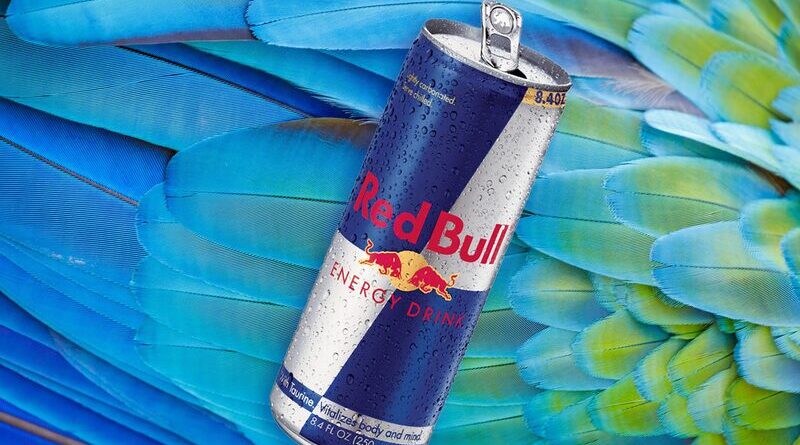The Power and Benefits of Red Bull Energy Drink
Since its launch, Red Bull, the well-known energy drink linked to extreme sports and high-achievement lives, has captured the attention of customers all over the world. Red Bull is now more than simply a drink; thanks to its distinctive ingredient combination and daring marketing strategies, it has become a cultural phenomenon.
This piece delves into the history, significance, debates, and potential futures of Red Bull, providing a thorough examination of the intriguing path of this widely consumed beverage. Come along as we reveal the mysteries of the can that grants you flight.
The Origins and History of Red Bull
The origins of Red Bull can be traced back to the late 1970s when Austrian businessman Dietrich Mateschitz discovered Krating Daeng, a Thai energy drink. Mateschitz collaborated with Thai businessman Chaleo Yoovidhya to modify the recipe for Western markets after realizing its potential.
Red Bull was introduced in Austria in 1987, complete with its recognizable compact can and unique logo. It established itself as a trailblazer in the energy drink market despite early doubts about its combination of caffeine, taurine, and B vitamins.
Red Bull’s global success was fueled by its strategic marketing approach, which aimed to link the brand with high-energy lifestyles and extreme sports. Which is present in more than 170 countries and is now linked with energy, adventure, and pushing boundaries
Red Bull’s Components and Ingredients
A few essential components make up Red Bull’s recipe, and they’re all responsible for its stimulating effects:
Red Bull Caffeine:
Red Bull’s main active component, caffeine, stimulates the central nervous system to increase alertness and decrease weariness.
Taurine:
Taurine is an amino acid that is present in the human body naturally and is thought to enhance both mental and physical function.
Sugar:
Red Bull was once made using glucose and sucrose. But it has since been reformulated using various sweeteners to provide options without added sugar.
B-Vitamins:
It contains a combination of B vitamins that are involved in several aspects of energy metabolism. Such as B3 (niacin), B5 (pantothenic acid), B6 (pyridoxine), and B12 (cobalamin).
Additional Ingredients:
To improve taste and texture, Also contains carbonated water and artificial and natural flavors.
Red Bull’s Effect on Physical Performance
Red Bull is frequently drunk because it is said to improve physical performance. Especially when one is tired or exerting oneself. It is thought that the drink’s blend of taurine, caffeine, and B vitamins can quicken reaction times, prolong alertness, and postpone the onset of exhaustion.
Red Bull’s impact on sports performance has been the subject of numerous studies, with varying degrees of success. While some studies have indicated moderate gains in strength and endurance when Red Bull is consumed before exercise. Other studies have not found any discernible advantages when compared to a placebo.
Red Bull’s capacity to fight mental tiredness is one of its biggest advantages when it comes to physical activity. It enables people to stay motivated and focused for extended periods.
The Marketing & Branding Strategies of Red Bull
Red Bull’s marketing and branding tactics are well known for their originality, audacity, and capacity to pique consumers’ interest across the globe. It has positioned itself from the beginning as a lifestyle brand associated with adventure, excitement, and pushing boundaries rather than merely an energy drink.
It emphasis on experience marketing and event sponsorship is one of the main tenets of its marketing strategy. The company provides sponsorship for a variety of extreme sports competitions, such as the Red Bull Air Race. Red Bull Cliff Diving World Series, and Red Bull X-Fighters motocross series.
It is promoting its brand as a beverage for risk-takers and thrill-seekers by linking itself with these exhilarating, adrenaline-filled activities.
Health Issues and Debates Regarding Red Bull
Red Bull has had great success and popularity. But it has also come under fire for its marketing strategies and claims about health.
Red Bull’s high caffeine concentration is one of the main causes of concern. The caffeine content in an 8.4-ounce it can is about 80 milligrams, or about the same as in a cup of coffee. Caffeine sensitivity or consuming many cans in a short amount of time are two reasons why excessive caffeine use can have negative effects such as elevated heart rate, anxiety, and insomnia.
Furthermore, Red Bull has come under fire for its marketing strategies. Especially in light of its youth target demographic and its links to dangerous conduct and extreme sports.
In addition, It has faced legal issues about its labeling methods and health claims. Red Bull’s marketing and labeling are subject to regulations in certain countries by regulatory bodies. Which include the inclusion of disclaimers regarding the product’s caffeine level and associated health concerns.
It insists that their products are safe when used sensibly and sparingly, despite these issues and debates. The business has responded to criticism and complied with legal obligations by offering materials that educate consumers about caffeine usage and providing clear labeling.
Conclusion
In conclusion, Red Bull has developed into a worldwide cultural phenomenon, surpassing its humble beginnings as an energy drink. It has carved out a niche for itself as the go-to beverage for people who enjoy extreme sports and high-energy lives, thanks to its famous branding and marketing methods and origins as a Thai beverage.
Red Bull has survived criticism for its marketing strategies and health claims. But it has prospered anyway by establishing itself as a beverage for risk-takers and thrill seekers.
Red Bull is still seen as a symbol of energy and risk-taking. Even if discussions about its effects and responsible usage continue. Its unique recipe and audacious advertising campaigns have captured the attention of customers all over the world.
